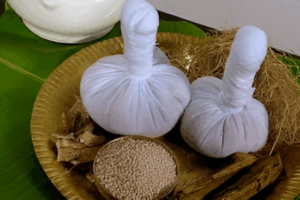Ayurveda, the ancient Indian system of holistic healing, presents a unique and comprehensive understanding of human physiology. Unlike modern anatomy, Ayurveda interprets the human body through layers of energy, consciousness, and matter. Central to this system is the concept of Saptadhatu—a framework that outlines the foundational elements sustaining physical and mental health.
In this blog, we’ll explore how this system is more than just a biological structure—it is a pathway to understanding health, healing, and the deep interconnection between body and mind.
What is Saptadhatu? A Foundational Ayurvedic Concept
Derived from Sanskrit, the term Saptadhatu means “seven tissues.” These seven fundamental components are believed to nourish the body, build its structure, and support its vital functions. Each dhatu (tissue) is interrelated, evolving sequentially from one another. If even one of the dhatus is imbalanced, it affects the entire system.
Here are the seven tissues that form the Saptadhatu:
-
Rasa (Plasma): The primary carrier of nutrients
-
Rakta (Blood): Responsible for oxygenation and life force
-
Mamsa (Muscle): Provides shape and movement
-
Meda (Fat): Lubricates and insulates
-
Asthi (Bone): Offers structure and protection
-
Majja (Marrow and Nerve): Fills the bones and nourishes the nervous system
-
Shukra (Reproductive Tissue): Supports reproductive health and vitality
Understanding these layers offers deep insight into how Ayurveda visualizes disease, health, and transformation from food to consciousness.
How the Saptadhatu Develops in the Body
Interestingly, Ayurveda teaches that each of them are formed from the essence of digested food. The process begins in the digestive system, where food is broken down and refined by Agni (digestive fire). As this transformation occurs, each tissue extracts its nourishment sequentially, one leading to the next.
This chain-like system means that:
-
A weak digestive fire disrupts the creation of healthy tissues
-
Poor-quality food leads to impure dhatus
-
Mental stress and toxins affect tissue formation
Hence, Ayurveda emphasizes not just what you eat but also how you digest and assimilate your meals.
Why Balance Among the Saptadhatu Matters
Balance is key in Ayurvedic thought. When the Saptadhatu are in harmony, the body experiences strength, immunity, and emotional clarity. On the other hand, when one or more of these tissues become depleted or aggravated, symptoms begin to surface.
Common signs of imbalance include:
-
Fatigue or lack of nourishment (Rasa)
-
Skin disorders or inflammation (Rakta)
-
Weak muscles or fatigue (Mamsa)
-
Excess weight or hormonal issues (Meda)
-
Joint pain or fractures (Asthi)
-
Neurological concerns (Majja)
-
Infertility or low libido (Shukra)
Moreover, treating imbalances in Ayurveda involves restoring the affected tissue by addressing diet, lifestyle and often using herbal remedies targeted to the specific dhatu.
Modern Health Challenges and the Saptadhatu Perspective
Today’s lifestyle is fast-paced, often sedentary, and filled with processed foods and stress. Not surprisingly, modern disorders—from metabolic syndrome to infertility—can be understood through the lens of Saptadhatu imbalance.
For instance:
-
Rasa and Rakta imbalances often correlate with anemia and immune deficiency.
-
Mamsa and Meda distortions are commonly linked to obesity or muscle-wasting.
-
Asthi and Majja depletion reflect in early osteoporosis or nervous system disorders.
-
Shukra depletion is frequently associated with reproductive difficulties.
By addressing these conditions holistically, Ayurveda moves beyond symptom management to offer long-term restoration of health.
Diet and Lifestyle: The Backbone of Dhatu Nourishment
One of the most empowering aspects of Ayurveda is its focus on daily practices. Supporting this begins with mindful eating, regular routines, and balanced activities.
Here are ways to support your seven dhatus:
-
Eat warm, cooked, and whole foods that are easy to digest
-
Follow a consistent daily routine aligned with nature’s rhythms
-
Use herbs like ashwagandha, shatavari, and guduchi based on the dosha involved
-
Incorporate yoga and pranayama to stimulate circulation and tissue strength
-
Stay hydrated to keep Rasa and Rakta flowing properly
Additionally, seasonal cleansing like Panchakarma helps eliminate toxins that may accumulate within or between tissues.
The Role of Emotional Health in Dhatu Balance
Another crucial yet often overlooked factor is emotional wellness. Ayurveda sees emotions and thoughts as deeply connected to the Saptadhatu. Persistent fear may weaken bones (Asthi), while unresolved grief can affect plasma (Rasa). Even chronic stress impacts Majja, the nervous tissue.
To address this, Ayurveda encourages:
-
Daily meditation or grounding rituals
-
Community support and spiritual connection
-
Practices that invoke joy, gratitude, and stillness
Healing, therefore, involves not just the physical structure but the emotional and spiritual layers woven into the dhatu network.
The Seven Bodily Tissues and Holistic Health
Referred to in some texts as the Seven Bodily Tissues, they play a pivotal role in shaping not only our anatomy but our consciousness. They reflect how external input—from food and environment to relationships—becomes internal strength or vulnerability.
This view elevates Ayurveda from a physical science to a soulful approach to wellness. By aligning your habits with the rhythms of nature and your constitution, you honor the sacred intelligence embedded in every tissue.
Conclusion: Saptadhatu and Modern Ayurvedic Practice
In conclusion, this system offers timeless wisdom that remains deeply relevant in today’s health landscape. Whether you’re managing chronic illness, seeking vitality, or simply curious about ancient traditions, this framework is a profound lens for healing.
Today, modern practitioners often integrate the Saptadhatu model into diagnostics and treatment strategies. For example, at a well-established Ayurveda clinic, you’ll often find assessments that identify tissue imbalances, followed by customized therapies to rebuild and rejuvenate.
Ultimately, understanding this means learning to listen to your body, nourish your essence, and walk the path of balance with awareness and compassion.









